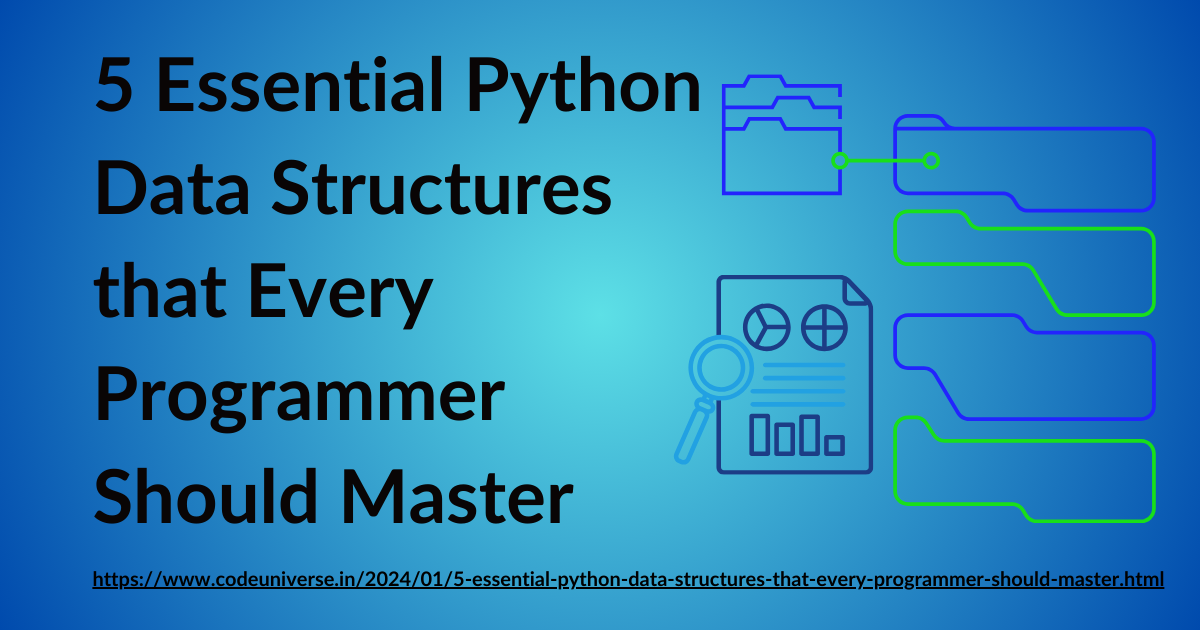Elevate Your Programming Skills with These 5 Must-Know Data Structures
Mastering Python's built-in data structures is a crucial skill for every programmer. These structures provide practical solutions for data handling, organization, and manipulation, addressing real-world coding challenges. These five Python data structures are necessary for all programmers
Lists
Lists stand out as one of Python's commonly utilized data structures.List demonstrates the attributes of being ordered, mutable, and capable of storing elements of different data types. List allows you to effortlessly manage and manipulate data by providing the capability to seamlessly add, remove, and modify details, showcasing their versatility across a broad spectrum of programming tasks.
Dictionaries
Dictionaries in Python operate as key-value pairs, enabling the storage and retrieval of data based on distinct keys. Their unordered and mutable nature makes them highly efficient for rapid data access. ictionaries prove beneficial for activities like creating mappings, preserving information, and managing data associated with a particular identifier.
Tuple
Tuples are similar to lists but are immutable; their elements cannot be modified. They maintain order and can embrace details of various data types.Tuples are similar to lists but are immutable; their elements cannot be modified. They maintain order and can embrace details of various data types.
Sets
Sets in Python are collections of unique elements, maintaining an unordered structure. They disallow duplicate values and offer support for fundamental mathematical set operations like union, intersection, and difference. Sets prove valuable in tasks involving ensuring unique values and checking membership.
Array
Arrays in Python are designed for storing data types of the same kind, offering efficient memory management and quick access to elements. While Python lists can handle diverse data types, arrays excel in numerical computations and managing large datasets.
In summary, a thorough grasp of Python's fundamental data structures—Lists, Dictionaries, Tuples, Sets, and Arrays—equips programmers with versatile tools for effective data manipulation, organization, and computation. These structures prove essential, enhancing coding capabilities across diverse tasks and ensuring proficiency in various programming scenarios.






